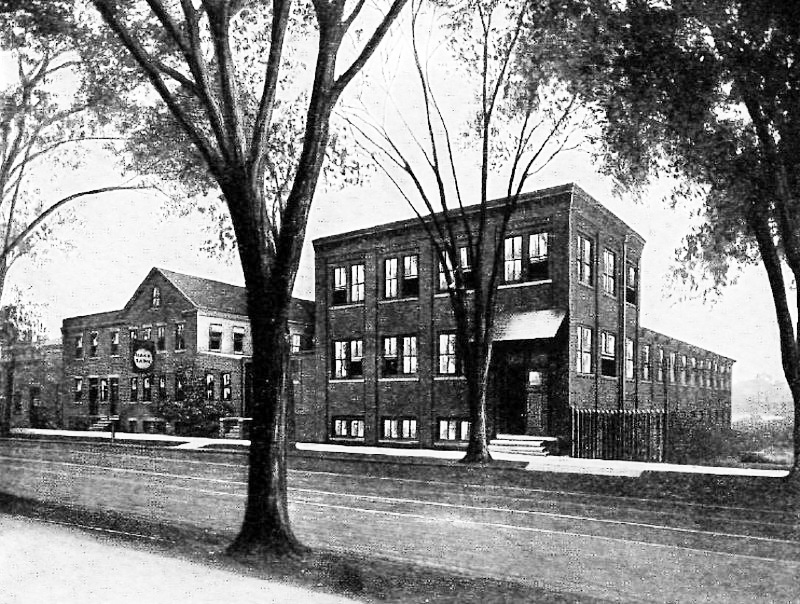By Dan Shine
Voice Columnist

H.H. Richards Lumber Company
For many years, Water Street was a place where shipwrights, merchants, warehousemen and factory workers labored, and of course it was closely tied to the sea.
By the mid-1800s, West Haven’s waterfront, particularly Water Street, was a busy place indeed. New Haven would never become a great international port, but it had by then become a center for trade with the East Coast, Europe, and the West Indies. In fact, it served thousands of commercial vessels every year: many were still under sail, but steam power was clearly taking over.
Yes, Water Street was a center of the West Haven economy, where workers traversed the dirt streets on their way to and from the Gesner and Mar Shipyard and an assortment of other businesses. And the hulls of three-and-four-masted schoolers that were being built in the two shipways towered above the neighboring homes.
Paul Richards had travelled to New York from England in 1667, carrying with him a “patent” which gave him the legal right to a plot of land in Queens County, New York. One of his sons, John Richards was a sea captain of a ship laden with lumber and bound for Bermuda; that ship was lost at sea. Eventually one of his descendants, William Richards, would purchase a farm and settle in West Haven.
With the passing of time, William’s son Henry H. Richards embarked upon a coal business in New Haven along with his two brothers. Coal was brought into New Haven by a company-owned ship. Ultimately, ownership of the company was turned over to the youngest brother, and in 1849 Henry Richards opened his own business on Water Street, operating a coal and lumber yard known as the H.H. Richards Company. Their advertisements proudly stated that H.H. Richards sold “pine, spruce and hemlock timber, plank boards, clapboards, shingles, pickets, laths, worked and dressed lumber.” That business would continue until 1939, when the buildings and lumber yard were consumed by fire.
During that period, Henry Richards was a leader in the community, establishing the Republican Party, and serving as an advocate of the Abolitionist movement.
In that period, typically those who owned and operated businesses in West Haven made their homes in West Haven as well. The Richards family adhered to that principle. In fact, today you can still see “Harborview,” the home of Benjamin F. Richards at 65 Main Street, corner of First Avenue. Built in 1892 for his bride, it was a showpiece of that age, with custom trim and cabinetry which used the finest woods, similar to those on the better sailing ships of that era. It should be noted that Benjamin Richards had by then branched out into the sale of insurance, real estate, “modern built houses,” and “a fine list of rents for prompt paying tenants.” That home, also a showpiece in itself, was designated a “Historical Treasure of West Haven” by the West Haven Historical Society in 2018.

Half a block away, at 81 Main Street, was the home of H.H. Richards, “owner of the oldest and longest operating lumber company and shipyard on Water Street.” In 1913 the house was the residence of Richard’s widow, Esther C. Richards. and painter Edward Wheeler. The house eventually passed to Earle F. Richards, a bond salesman, who sold the property in 1936 to Mettie B. Platt. Platt in turn sold the house to William and Sophie Greenhouse in 1944. The Greenhouse family resided in the house until 1984 when it was purchased by Jeff and Mary Ann Starkes. The Starkes still reside in the house.
It should also be noted that the home of Captain John M. Richards (no relation to the other Richards family members), known as “Hedgehurst,” once stood at 141 Main Street, at the corner of Second Avenue. Although that large and ornate home was removed many years ago, to this day a stone sill stands by the curb at that address as a reminder of West Haven’s past.
In more recent years, Water Street was the home of West Haven Manufacturing Company (the brick building at the corner of Elm Street) which later became the “hacksaw plant.” as it was referred to in a local business directory. Just across Water Street was another brick building, which was the home of Advance Doll and Toy Company, where walking and talking dolls were produced during the 1950s. The Bilco Door Company occupied the space previously used by H.H. Richards Company until just recently.
Both Main Street and Water Street end at the former site of the Gesner and Mar Shipyard, which operated there from 1861 to 1891. When that business failed, Ruben Green took it over and operated it as Green’s Shipyard until the 1920s, when it became the Yale Flying-Boat Service, and offered the building and repairing of seaplanes through the 1940s.
As we can see, Water Street has served West Haven and its people in many ways and for many generations. We look forward to the next great chapter in the life of this storied neighborhood!
Thanks to Mary Ann Starkes, Cathie Iaccarino and Sara Pettinger for their help with this story.